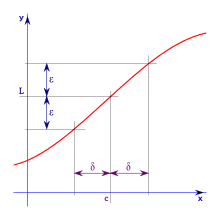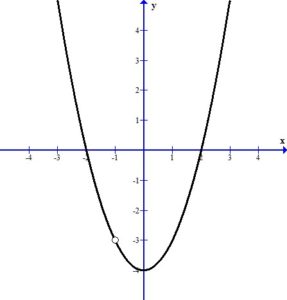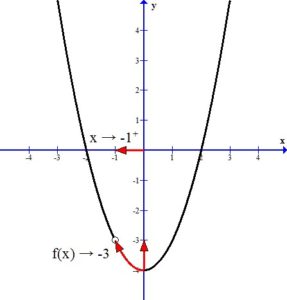Category Archives: Calculus
Mean Value Theorem
Optimization
Rationalizing Technique
In addition direct substitution and the dividing out technique we also have the rationalizing technique. You will try using this technique when you see a radical in the problem.
Dividing Out Technique
The first technique we discussed for finding a limit analytically is direct substitution. That strategy doesn’t work when we get an indeterminate form from the substitution such as 0/0.
One strategy to handle this form is the dividing out technique. This is where you factor both the numerator and denominator and cancel any common factor.
Here are some video examples.
This example has a quadratic to factor.
The first example in this video uses a special factoring technique called difference of squares. The second example in this video avoids factoring by using synthetic division to divide out.
The second example in this video matches the 2nd example in the video above but using the special factoring technique of difference of cubes instead of using synthetic division.
This video has an example that reviews factoring trinomials with a not equal 1.
Formal Definition of a Limit
Let f be a function defined on an open interval containing c (except possibly c), and let L be a real number. The statement
 .
.
means that for each  > 0 there exist
> 0 there exist  >0 such that
>0 such that
0<  <
<  then
then  <
<  .
.

Here is a video that demonstrates how to prove the limit is L using the delta-epsilon definition.
Limit at a Hole
The function f below is undefined for x=-1. Using a table, analyze what is happening to f(x) as x approaches -1.

Filling out this table will help us decide what is happening to f(x) as x is getting closer to -1 from the left. (x’s that are smaller then -1)
| x | -1.1 | -1.01 | -1.001 | -1.0001 | -1 |
| f(x) | ? |
Filling out this table will help us decide what is happening to f(x) as x is getting closer to -1 from the right. (x’s that are larger then -1)
| x | -.9 | -.99 | -.999 | -.9999 | -1 |
| f(x) | ? |
Here is a video that will help you use the features in your calculator to fill in the values of the table:
| x | -1.1 | -1.01 | -1.001 | -1.0001 | -1 |
| f(x) | -2.79 | -2.9799 | -2.998 | -2.9998 | ? |
As you can see from the table, f(x) approaches -3 as x approaches -1 from the left. Symbolically  as
as  from the left would be written.
from the left would be written.

| x | -.9 | -.99 | -.999 | -.9999 | -1 |
| f(x) | -3.19 | -3.0199 | -3.002 | -3.0002 | ? |
As you can see from the table, f(x) approaches -3 as x approaches -1 from the right. Symbolically  as
as  from the right would be written.
from the right would be written.

These are called one sided limits.
Informal Definition of a Limit: If f(x) becomes arbitrarily close to a single number L as x approaches c from either side, then the limit of f(x) , as x approaches c is L.
In general: 
In our example, f(x) becomes arbitrarily close to -3 as x approaches -1 from the left and right.

Limit at a Hole
Use the graph, estimate the limit as x approaches -1.

The function f above is undefined for x=-1. By simplifying f(x) we find a function whose graph agrees with f(x) at every point except -1.




Since f(x) is undefined for x=-1 and we were able to cancel a common factor of x+1 from the numerator and denominator there is a hole in the graph of f(x) at x=-1

For f(x) to have a limit as x approaches -1 the one-sided limits must agree.
From the right:


From the left:


Since the one-sided limits agree, the limit exists.

Here are some practice problems.